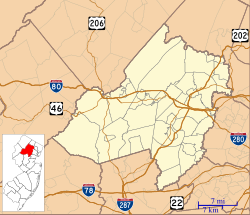| Hopatcong State Park | |
|---|---|
 A woman walks to the beach at Lake Hopatcong State Park in New Jersey. | |
| Location | Roxbury |
| Coordinates | 40°54′52″N74°39′55″W / 40.91444°N 74.66528°W |
| Area | 163-acre (0.66 km2) |
| Opened | 1922 |
| Operated by | New Jersey Division of Parks and Forestry |
Hopatcong State Park is a state park in the Landing section of Roxbury, New Jersey, United States. Operated and maintained by the New Jersey Division of Parks and Forestry, the park consists of two parcels of land: one that encompasses Lake Hopatcong and some of its southwestern shore, and another that encompasses Lake Musconetcong about one mile to the west-southwest. [1]
Contents
The park contains remnants of Morris Canal, which operated from the 1830s to the 1920s and was largely fed by the lake. The park is also home to the Lake Hopatcong Historical Museum, housed in the former home of the lock tender and his family.





